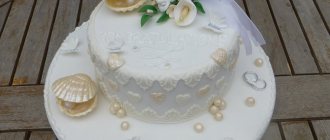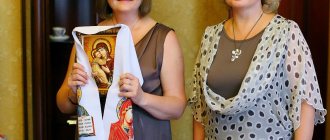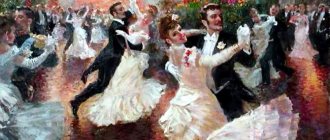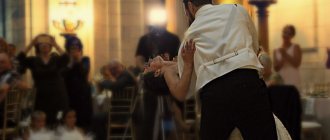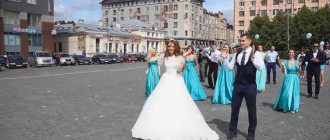Tango is a dance that combines tenderness and passion, sharpness and smoothness. The movements of this dance can express many feelings, which is why tango is one of the most popular wedding dances chosen by newlyweds. The special rhythm of this dance provides an excellent opportunity to express the tenderness and passion, the ardor of the feelings of the bride and groom.
The movements of this dance can express many feelings.
One of the most memorable events at a wedding is the first dance of the newlyweds.
Our teacher Tatyana Zausalina will help you realize this moment of celebration.
The teacher has more than 20 years of dance experience in different styles: from classical choreography to pop and oriental dances. Together with Tatyana, you will choose the direction of dance and music, decide on the complexity of the elements, since some elements and supports require good physical abilities and coordination. Even if you have never danced, there are simple and effective dances and elements that will make you look great!
It is important that your dance is no more than 3-4 minutes, otherwise (according to numerous observations) the audience’s attention is usually quickly lost. But options with a slightly longer duration (up to 4-5 minutes) may also be suitable.
Also, depending on the complexity of the dance. For each pair, the optimal number of classes is selected, from 5 to 20.
The teacher will videotape your progress during rehearsals so that you can repeat the movements yourself, thereby improving your dancing, and will preserve the memory of your first (or not the first) steps in this art.
One lesson with a teacher lasts 60 minutes.
Classes are held by prior arrangement depending on the occupancy of the hall (lesson availability: weekdays from 10:00 to 18:00, Saturday: from 10:00 to 13:00; Sunday from 10:00 to 12:00 and from 17: 30 to 21:00).
Five lessons is the minimum number required to memorize the dance. Depending on the complexity of the dance and level of training, more time may be required for training - from 6 to 20 lessons.
The cost of one wedding dance lesson, taking into account the rental of the hall (metro station Elektrozavodskaya): 2300 rubles. From 10 lessons a discount is provided: one lesson - 2100 rubles. including hall rental.
You can contact Tatyana by phone: +7 (977) 168-93-00
You can get to know us and our school at a free open lesson. Come!
Selection of figures
A video for fans of clear, concise instructions without author's comments or detailed explanations. Contains a selection of steps of different levels of difficulty, from simple steps to complex cross-shaped “intertwining” legs. Each figure is shown in pairs, for women and men separately - it is convenient to learn and practice at home. Girls will have to get special shoes. There are several selection criteria to consider:
- shoes should be softer than ordinary street shoes,
- heel height 7.5 – 10 cm,
- a model with an open or closed heel is allowed (the latter helps to maintain balance).
You can check for stability by resorting to a little trick: if the shoes are placed next to each other on a flat surface, they should not wobble.
February 17, 2020
Wedding tango of the bride and groom
When two lovers move to the rhythm of a fiery and piercingly tender southern dance, those around them can only wish them to remain as enthusiastic all their lives. That is why newlyweds are now increasingly choosing wedding tango as their first dance.
It can be a fast and rapid dance or a gentle and mesmerizing slow circle - the choice is yours!
The teachers of the “Tango Without Rules” school will accurately select the dance format to suit the character of your couple and the style of the wedding as a whole. It doesn’t matter at all whether you have choreographic skills or whether this will be your first experience as a dancer.
Summary
Flamenco, samba, mazurka, polonaise - there is no special formula for how to choose a wedding dance. He can be anything. And only the young people decide what they will dance at their celebration of love. Eternal classics or an unexpected surprise dance - you need to choose something that both newlyweds like and matches the style of the wedding.
A creative approach, a desire to please guests, and, most importantly, passionate and tender feelings for each other - this is a guarantee that the first wedding dance will become the decoration of the celebration.
Sources:
https://svadba.expert/podgotovka/provedenie/tantsy/tango-zeniha-i-nevesty https://dancewedding.ru/svadebnyj_tanec_tango https://tamada.expert/provedenie/svadebnye-traditsii/tanets-molodyh/tango- ili-vals-lyubvi-kakoj-svadebnyj-tanets-vybrat.html
What should you wear to dance tango at a wedding?
Brides who want to decorate their holiday by preparing a wedding tango do not have to worry about the outfit at all. The choreographers of the “Tango Without Rules” school will be happy to share some secrets:
- You can dance the wedding Argentine tango in almost any dress. Ideally, it will not hinder your movements and open your legs;
- Often, brides for a wedding dance specially prepare a similar dress, similar to the wedding one, of the same color and with the same decor, but its cut is different and is essentially a tango dress (which can later be worn at tango dance evenings);
- if you prefer passion, opt for dresses without crinoline;
- if the dress of your dreams does not fit in with your idea of tango, change your clothes before the dance, and then again enjoy the foam of lace;
If at the wedding you would not like to change your dress specifically for the newlyweds’ dance, show a photo of your wedding dress in advance and we will choose such dance movements so that you look impressive and organic, and the dress only decorates you without restricting your movements.
Notes on clothing and shoes
For the bride
Tango and long skirt are incompatible.
Prepare a separate outfit for the performance in advance (no mini!). A typical tango skirt should be cut at the hips. It requires cuts that allow lunging and opening. Make the long skirt of your wedding dress removable. Make sure you have replacement dance shoes in advance. Choose not a “model” shoe option (no long toes!), but buy high-quality dance shoes. They are comfortable, elegant and look no worse than dress shoes.
For the groom
The jacket for a tango performer is cut so that when the arms are raised, the shoulders of the clothing do not ride up. If your clothes are not sewn correctly, perform without a jacket (in a shirt, vest).
No long-toed shoes! Choose comfortable classic shoes, preferably specially made for dancing.
You must rehearse in the shoes you will be dancing in. This is necessary so that your feet have time to get used to the dance shoes.
Refrain from common tango cliches (a rose in your teeth, a hat on your partner) when performing a wedding dance. In order not to look funny when using objects, you need a long preliminary training.
Tango surprise for friends' wedding
Ksenia's impressions:
“I would like to express my gratitude to Tatyana for staging the tango. It was very comfortable to work with, the task was easily completed in just two lessons (well, plus rehearsals). It turned out to be a beautiful dance with different elements that Tatyana selected based on our skills. She explained and showed everything well; if something didn’t work out, they worked hard on it. It was very comfortable to work with, everything was done with jokes and ease. Overall, we had great fun and a great result. Thanks a lot!"
George's impressions:
“We were preparing a dance as a wedding gift for friends. There wasn’t much time; we had never danced as a couple before, but some dancing skills remained from our youth. We clearly knew that we wanted Tango and chose our own music. We turned to Tatyana and were right. She looked at the skills, listened to the accents in the music and suggested an original sequence of elements for the dance. In just two lessons, she showed and explained everything, and did a lot of repetitions. Then we rehearsed ourselves a couple more times. Friends and newlyweds rejoiced at our performance. Tatiana, THANK YOU so much! Good luck and all the best!”
We will be grateful for your shares on social networks:
Detailed analysis of the dance composition
First figure
Starting position – the partner holds the lady by the hands in a training position. The position does not change during the execution of the figure:
- At the count of “one” of the FIRST beat (1-2-3), the partner takes a step to the side with the left leg, pulling the right one towards it (without transferring the body weight to it).
- At the count of “one” of the SECOND beat (1-2-3), the partner takes a step to the side with the right leg, pulling the left one towards it (without transferring the body weight to it).
- Then the partner, at the count of “one” of the THIRD and FOURTH measures, steps to the side with the left foot, in the interval placing the right one with the transfer of body weight.
Total: to the side to the left (L) - to the side to the right (R) - to the side to the left (L) - put your foot with the transfer of body weight (R) - to the side to the left (L). The lady's steps are all the opposite.
Then we do the same to the right side with the right leg: to the side to the right (R) - to the side to the left (L) - to the side to the right (R) - put your foot with the transfer of body weight (L) - to the right (R).
Second figure
Performed in a training position.
Based on the partner's steps, the figure is identical to the first. But maintaining a partner is more difficult:
- Simultaneously with the step to the side, the partner releases the partner’s hand and slightly turns the body to the left.
- Returning to his right leg, the partner turns his body towards his partner. At the same time, the hands of the partner and the lady rest their palms on each other.
- During the double side step, the partner rotates the partner under his right hand, assisting the rotation with his left hand.
- Then the same movements are performed in the other direction.
At the end of the figure, the partner, being in front of the partner, shifts her right hand from his left to his right. The partner's left hand is placed behind the waist. The partner picks up the hem of her skirt with her left hand. This position is used in the figure waltz.
Third figure
- The partner and partner for the first three walk towards each other (from the right foot on the count of “one”), without putting their foot down.
- For the second three - from each other (from the left foot to the count of “one”).
- Then, in two threes, the partner and partner move past each other, turning to face each other at the last moment. Which leg the movement starts from and the number of steps does not really matter. Although it is advisable to take one step in the first three of the transition for each blow (the partner and partner pass by each other), and spend the second three on turning towards each other.
- We repeat, only on the second three-piece the partner transfers the partner’s right hand to his left. And with his right hand he takes the lady by the spatula, and she puts her left hand on her partner’s shoulder (transition to a dance position).
Fourth figure
For four threes, the partner takes four steps without placing or transferring body weight. The beginning of the movement is with the partner’s left foot stepping backwards. He carries the lady along with him, gradually turning to the right along the way (in four threes the couple needs to turn completely around its axis).
Then the partner raises his left hand up and turns his partner under it, helping her with his right hand. Two triples - two turns. When turning, it is advisable for your partner to look at her partner as long as possible to avoid dizziness.
Like that:
Then the couple returns to the dance position.
Four steps into four triples with a complete rotation of the pair around its axis are repeated. The two turns under the arm are also repeated. After them, the partner lowers his left hand and intercepts the partner’s right hand with his right hand (figure waltz position).
The lady walks around her partner and bows
The partner leads the lady with his hand, encouraging her to completely circle around him. Performed in four triples. The number and speed of steps are not regulated. The main thing for a partner is to comfortably and elegantly go around her partner.
At the same time, the partner gives way to her, taking steps to the side without transferring body weight:
- 1-2-3 Left;
- 1-2-3 Right;
- 1-2-3 Left;
- 1-2-3 Right
If the dance is performed not only by young people, but also by witnesses (two or three couples are enough, although the more the better), then the partners, after their partners go around them, direct their ladies to the neighboring partner (who is standing on the right). This way you can perform the combination several times in a row, each time with a different partner. To do this, the pairs must be arranged as follows:
Partners have their backs to the center, evenly distributed around a small circle.
Ladies face the center, in front of their partners.
The number can be used as the first dance of the newlyweds, as a pre-rehearsed number of the newlyweds and bridesmaids with their boyfriends. You can also organize something like a flash mob for guests. Learning the dance will take very little time, and performing it together will enliven the wedding and leave pleasant memories for a lifetime.
Have a beautiful wedding waltz!
Video of tango performances of our newlyweds
Wedding tango of newlyweds
The guys performed a rhythmic and emotional tango. Quite a large set of complex figures and supports. Of course, it’s not easy to get together and do everything correctly; you need to concentrate on each other and the music.
Passionate wedding tango
Emotional and such a bewitching dance. Everyone is closely watching the looks and movements of the guys. Music adds mystery and thus works well with the audience.
How to learn?
In order to get maximum pleasure from the production for both guests and newlyweds, you will need to memorize all the elements well and practice each one. The sooner you start training, the better the dance will be, since there will be more time to correct mistakes. It is advisable to contact a choreographer, because only a specialist can teach you how to move correctly in a short time. In addition, it is the specialist who can find an individual style for the couple and a dance that will be easy for both. On average, rehearsals begin a month and a half before the wedding. This is enough, even taking into account the workload of both, to learn everything down to the smallest detail. The original dance takes up to six lessons, but only if the newlyweds then repeat the movements at home.
If your budget is limited, you can try and learn the performance yourself. Numerous video tutorials will help with this. Such activities have many advantages:
- no need to adjust to time;
- lack of payment;
- no embarrassment;
- You can choose any movement according to complexity.
The only negative is that no one can point out shortcomings, give advice and show how this or that movement can be simplified. When learning the dance on your own, both in a couple can feel confident and focus on the details. Men especially don’t like to look stupid, so training at home is one of those pastime options where young people can become even closer to each other. Such a fascinating creative process is addictive and fills the future dance with life.
Any room in the apartment is suitable for rehearsals; you just need to clean the space as much as possible and remove excess furniture. If we talk not only about the pros, but also about the cons, then the couple must be as motivated as possible in order to complete the job. It is not so easy to calculate your strengths; sometimes it happens that a couple first chooses something very difficult, but after a few weeks they realize that it is impossible to perform the dance due to poor preparation of both. As a result, both are upset and time is lost.
It is not easy to select a composition; it takes a lot of time to find it. It is not always clear from the video how this or that support or rotation is performed. When difficulties arise, not every couple reaches the end and most often simply gives up. If one of the partners has at least some experience in dancing, then everything is simpler; it takes up to two weeks to study the production with constant rehearsals. But it’s not enough just to choose good music; you need to put all the movements together so that they look harmonious. By excluding complex lifts and other elements from the dance, the learning time can be reduced.
If there is not much time left before the wedding, then it is best to master the waltz; it always goes well with wedding clothes, it can be performed in almost any room and does not require any additional effort. You can choose any waltz:
- slow Viennese;
- Boston;
- figured.
If a couple has already danced before, it is better to take the Viennese version as a basis, since it will require plasticity, flexibility, and good endurance from the partners. Boston, which is very elegant and discreet, is ideal for romantics. For those who want a dance to be remembered forever, there is simply no better option than tango. As for the figure waltz, it can be described as a dance with amazing, but simple movements. It is suitable for girls who are planning a fluffy outfit with a wide skirt.
If you want the celebration to be fiery, then all the attention is on rumba, salsa or cha-cha-cha. Anyone can remember these rhythmic movements, and no special training is required to perform them.
It is these dances that are able to demonstrate the whole gamut of feelings that newlyweds experience for each other. The most important thing is that if one of the couple suddenly forgets one of the elements, you can easily improvise, and no one will guess anything
Couples who want something unusual can offer classic and retro styles, the movements of which will be combined in one production. The mix always surprises and pleases with its originality. If you also make a selection of music, then the dance will turn into a real performance for the guests, bright and exciting. Active and sharp movements work especially well in those couples in which the girl is small and petite, and the man is large and strong.
Wedding tango - the first dance of the bride and groom
Choosing the first wedding dance is perhaps one of the most difficult issues of the upcoming celebration. Music should respond to feelings, capture, give pleasure and subsequently become a symbol of the family. Many registry office employees offer to perform a wedding dance immediately after the painting.
But their choice of melodies is limited mainly to slow dance or waltz. But what to do if your soul and passion require fiery and uninhibited steps. Wedding tango is an excellent choice in this situation. Let's talk about the performance features and national specifics of this dance right now.
Matching the style of the celebration
It is desirable that the first dance of the bride and groom fits into the overall style of the wedding celebration. A traditional wedding will be decorated with a classic waltz or an expressive foxtrot.
Have you chosen a wedding in retro style? Then the dance of the young people can be “greetings from the past” - it would be nice for a couple to perform the Charleston, twist, boogie-woogie.
A wedding celebration in the disco style gives room for imagination - you can prepare a whole composition, a mix of popular melodies with dance moves from youth discos.
What to consider when preparing
Having chosen tango as the first dance for your wedding, you should carefully familiarize yourself with the features of its performance. It is far from simple as it might seem. The national flavor of hot Argentina permeates it to the last note. Passion, fire, emotional dialogue between a man and a woman - these are synonyms for tango.
The features of the dance also include:
- clear rhythm and corresponding movements;
- free composition (no specific dance steps);
- variety of movements both in the legs and arms;
- mandatory sensual dialogue with a partner.
It is not easy to comply with all these requirements, especially if there was no dancing practice before the wedding. However, tango is exactly the dance that, learning it, can bring partners closer together and introduce into their relationship a unique feeling of unity with each other. The most difficult part in tango is leading the melody with your feet. It is in the melody that the movement is contained; it is possible to sing it with dignity with the body only after long training.
Also, we must not forget about our partner. From the very first note, the entire message in emotions and movements should be directed towards him. It is necessary to maintain contact by any possible means, from turning the body to looking. Dress code is very important in tango. Performing it in a long fluffy dress is extremely difficult and not at all impressive.
Choreographer
Waltz King
Times are changing, but the waltz as the first dance of newlyweds has not yet lost its position. In combination with music and the tender feelings of the newlyweds, such a dance will definitely decorate a wedding celebration:
If the couple has chosen a classic wedding style, then the waltz will fit perfectly into the concept of the celebration. What else can you wear to perform this dance, if not in a long, fluffy ball gown? This is exactly what many brides choose.
Not everyone can easily and gracefully twirl to a beautiful melody, for example, the Viennese waltz. Still, completely different rhythms and movements are in fashion today.
But any couple can learn basic waltzing movements. You can choose a figured waltz, it is easier to perform.
Foxtrot – harmony of feelings
Don't let the name scare the newlyweds. Yes, you won’t be able to dance it without preparation. If the couple chose the foxtrot, then they will have to turn to a choreographer for help and rehearse intensively.
But many melodies, both ancient and modern, are suitable as accompaniment. They should be slow but rhythmic; the couple will be able to move gracefully to such music.
The elements of this dance are smooth and gliding; to perform it you need a spacious dance floor.
Tango of love
Another option is tango. It suits a more emotional couple who also has dancing skills. If the dance is performed at the proper level, it will become a highlight of the wedding program.
But you shouldn’t focus on the desire to amaze your guests. The first dance is not so much for them as for the couple themselves. So, you should think carefully before choosing such a complex and passionate dance.
Moreover, the bride’s outfit must match it. Performing tango in a dress with a fluffy long hem is uncomfortable and inappropriate.
What music to choose - list
You shouldn’t be afraid of making a mistake in tango, but if you don’t have confidence in your abilities, you can choose a simpler composition. There are several varieties of tango:
- Argentinean (folk version, the most passionate, fast and rhythmic);
- Finnish (an option full of romance and tenderness);
- ballroom (classical dance with alternating rhythms and moods).
All of these types have their own performance characteristics, their own original rhythms and melodies. To make a choice, you need to listen to more than one melody and understand exactly how you can move to it.
Today there are special agencies and dance schools where they can help you with your choice, stage an unforgettable wedding number and teach you how to dance.
There are such schools in Moscow, St. Petersburg, Vladimir, Voronezh and other cities of Russia. You can choose any composition you like, but the most popular today are the following works:
- "Satumaa" – Reijo Taipale;
- “Tango merella” – Taisto Tammi;
- “Scent of a Woman” – Jazmine Sullivan;
- “Libertango” – Astor Piazzolla;
- "Santa Maria (Del Buen Ayre)" Gotan Projec.
An individual musical mix of several works is also possible. However, it is important here not to disrupt the overall unity of tempo, tonality and time.
For a high-quality result, it is better to turn to professionals or take a ready-made option.
Playing with gravity
The Tangobezpravil channel, representing the Moscow school of the same name, offers a mini-lecture with visual examples, the key idea of which is the statement of Alexander Mantignan: “Dance is the art of managing the state of instability.” The teacher and his assistant will analyze the mistakes of beginners and intermediate students who are trying to jump from one state of stability to another, instead of “swimming” in the air, learning to balance. Viewers will learn how to maintain grace, why experienced dancers do not invite inexperienced ones, what is the problem of people who are afraid of instability.
Let's move from plants to animals
There are almost universal flexible images that are easily played out both in children's dances and in all kinds of adult dances. Where children portray “cuteness,” adults introduce sexuality or mysticism.
1. cat and mouse
2. wild cats (tiger, lion, panther, etc.)
3. butterfly (both funny flights and drama about a short life until dying)
4. snake 5. moths (flutter), dragonflies and other insects that can have romantic translucent colorless wings 6. bat 7. pet (cat or other) plus its owner 8. swan 9. peacock 10. bird in general ( without reference to the variety) 11. mystical birds (firebird, all sorts of magical colorful birds, etc.) 12. wounded bird
Images that are predominantly found in children's dances because it is difficult to find romance, mysticism or sexuality in them:
1. chickens, chicks and hen 2. feud between cat and dog 3. interaction between predator and herbivore 4. bunnies, rabbits, hare and fox, just a fox 5. squirrels 6. frogs 7. ladybugs 8. mice, cat and mice 9. bees, hive 10. fireflies 11. caterpillar (from many people) 12. horses, ponies 13. animal (beast, bird) and its young 14. penguins
If the act is not just a group act, but a mini-performance or a chain of mini-solos (“defile”), then a combination of different costumes within one act is appropriate. For example, “jungle world” or “farmer’s house”. Moreover, it can be either a children's fairy tale or a defile show at the pole. Or Indian classics - see the article about jungle-themed dance in Bharatanatyam.
Some practical advice
Music choice is the cornerstone of success. An iconic beautiful composition will guide you and help you if anything happens. It is better not to choose boring or ambiguous music. Classics of the genre are best suited. It is not necessary to choose an original sound; now many modern groups and performers make their own remixes and arrangements.
The most famous tango compositions in the world:
- La Cumparasita, Gerardo Matos Rodriguez;
- Libertango, Astor Piazzola;
- Oblivion, Astor Piazzola;
- El huracán, Edgardo Donato;
- El adios, Maruja Pacheco Huergo.
Also, soundtracks from films are perfect: “Moulin Rouge” (tango Roxen), “Let’s Dance” and “Scent of a Woman” (Argentine tango), the repertoire of one of the most famous and iconic tango performers Carlos Gardel, compositions by the modern French group Gotan Project.
Cost of classes
One-time lesson: 2500 rub. + hall rental.
Subscription for 5 lessons: 11,000 rub. + hall rental.
Hall rental: 600 rub/hour. Lesson duration 60 minutes.
SIGN UP
More than 192 trainings conducted
More than 768 graduates
100% guarantee of results
Advantages of an intensive tango course for beginners at the Tango Lessons school
Classes at the intensive training school “Tango Lessons” are held in halls in a building located 5 minutes from the Dobryninskaya metro station. There is free parking near the school for all students.
Phone number of the school "Tango Lessons"


